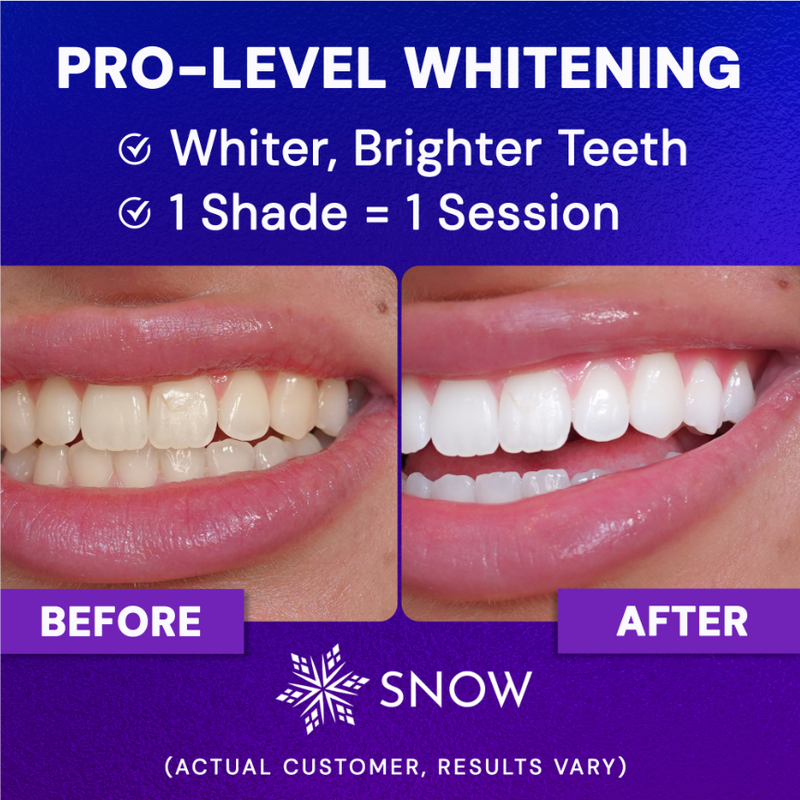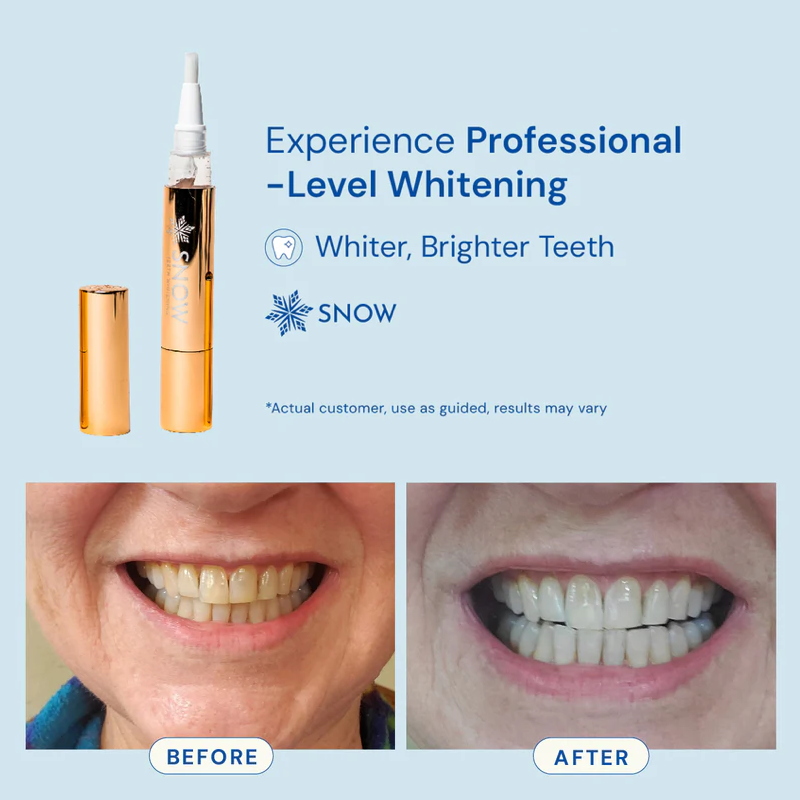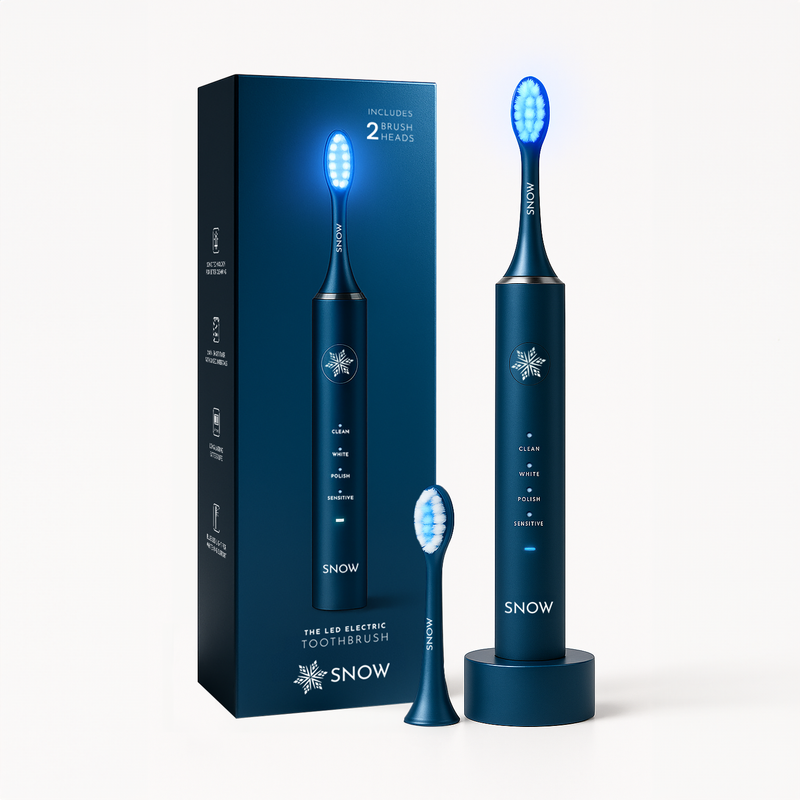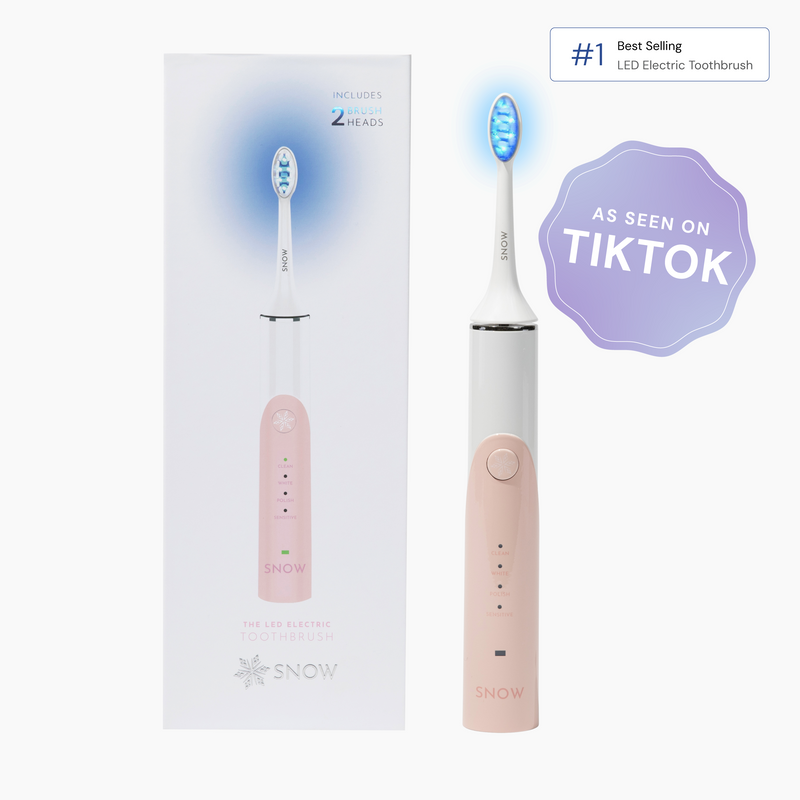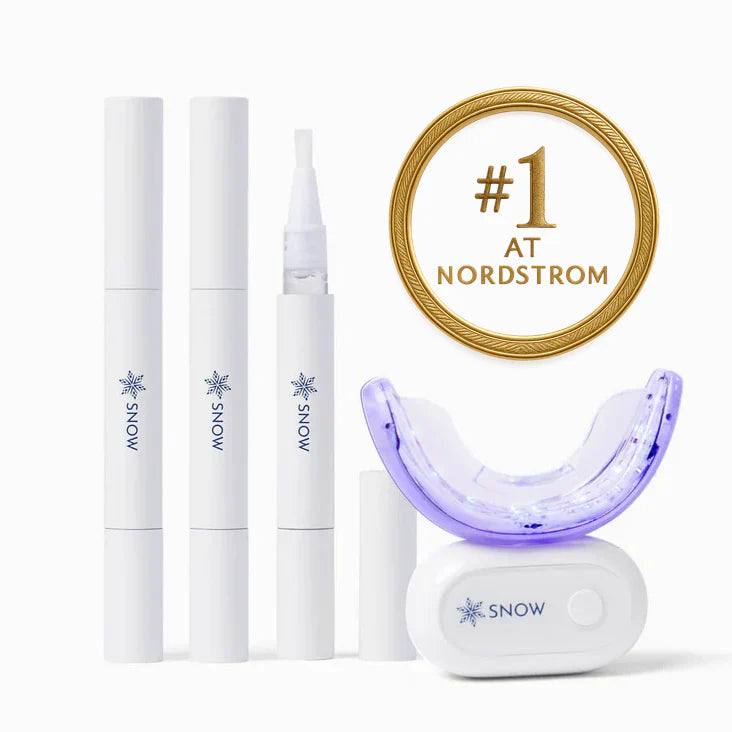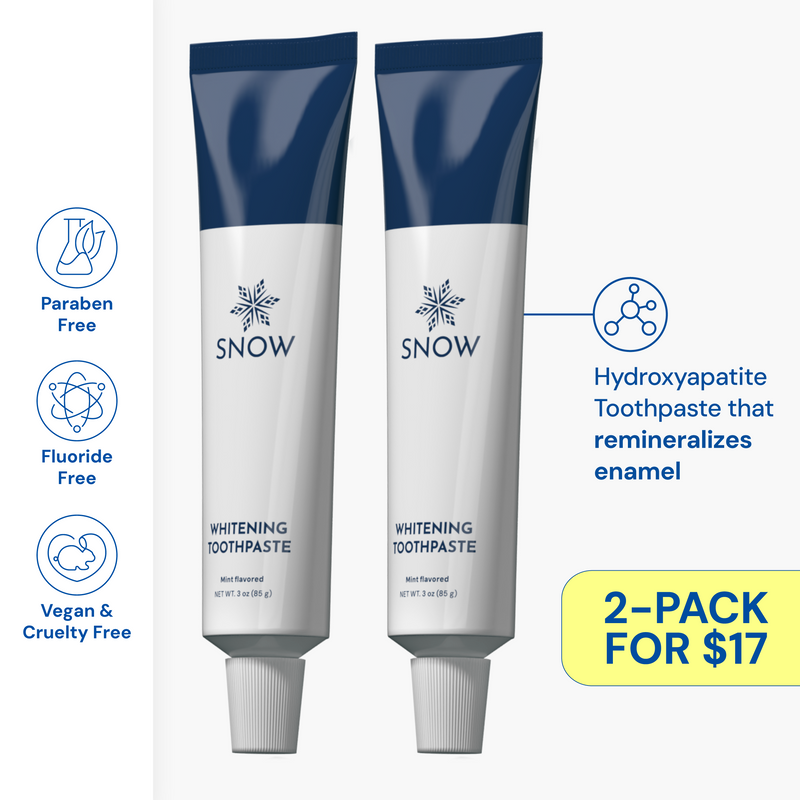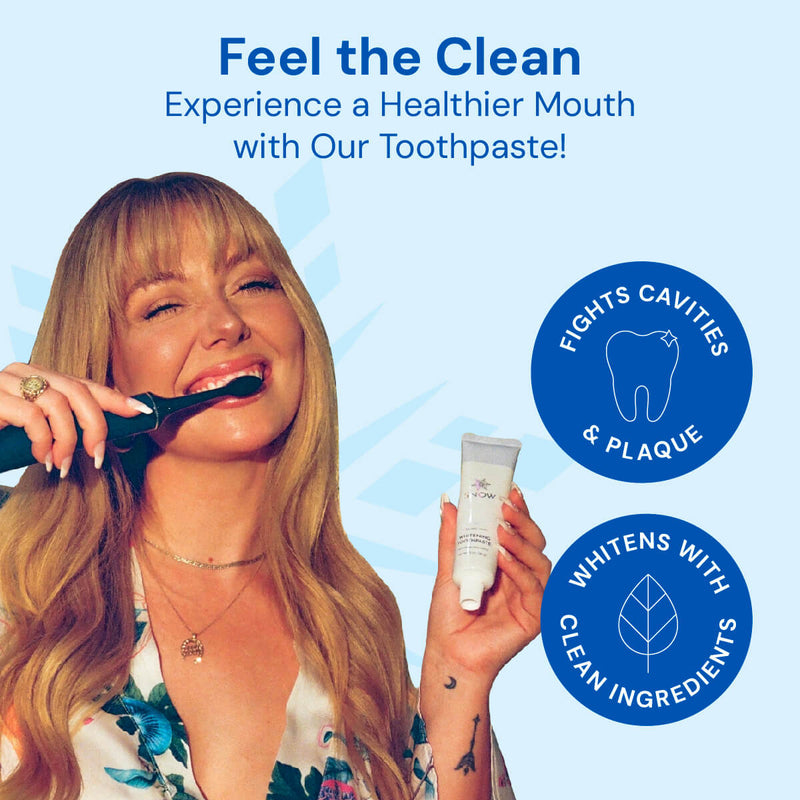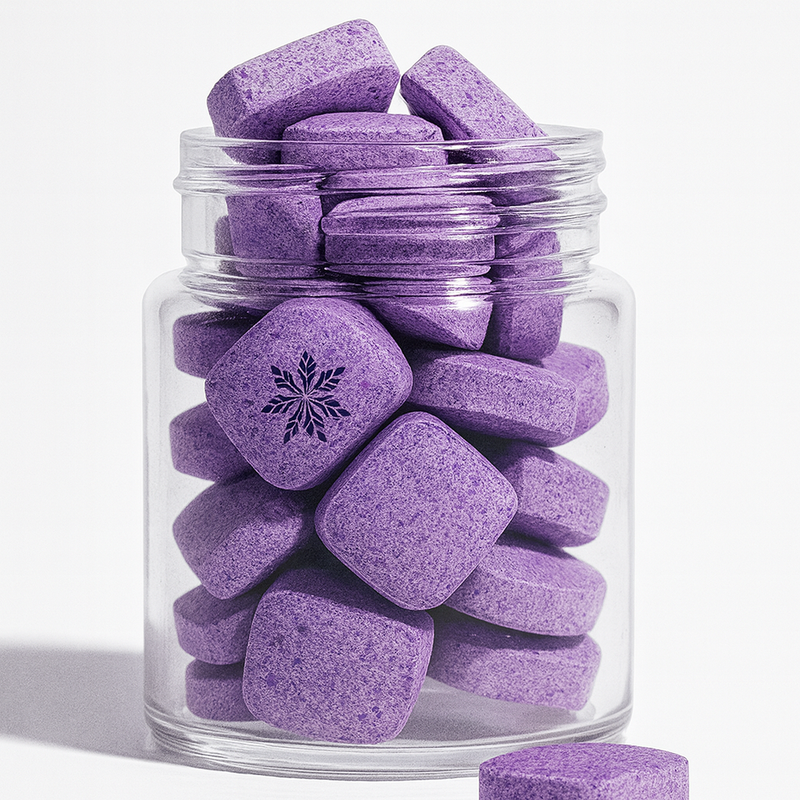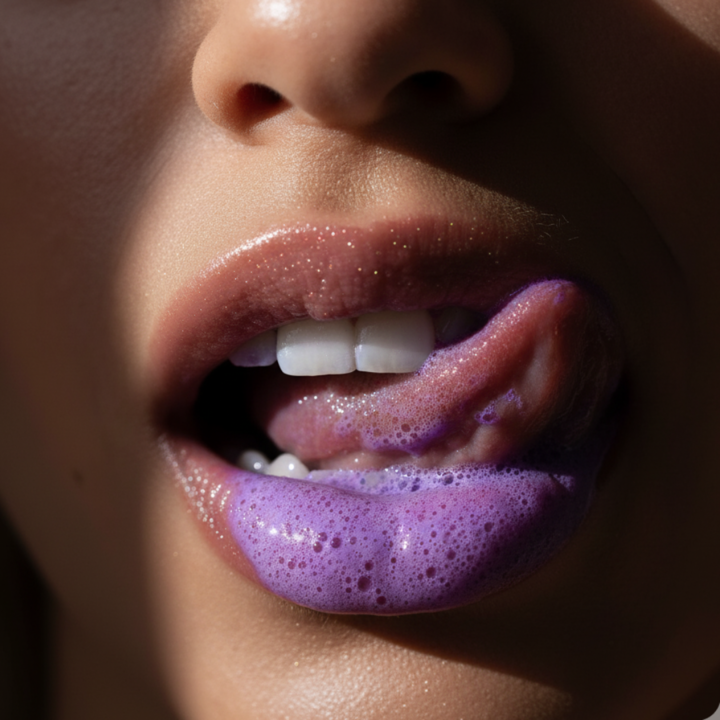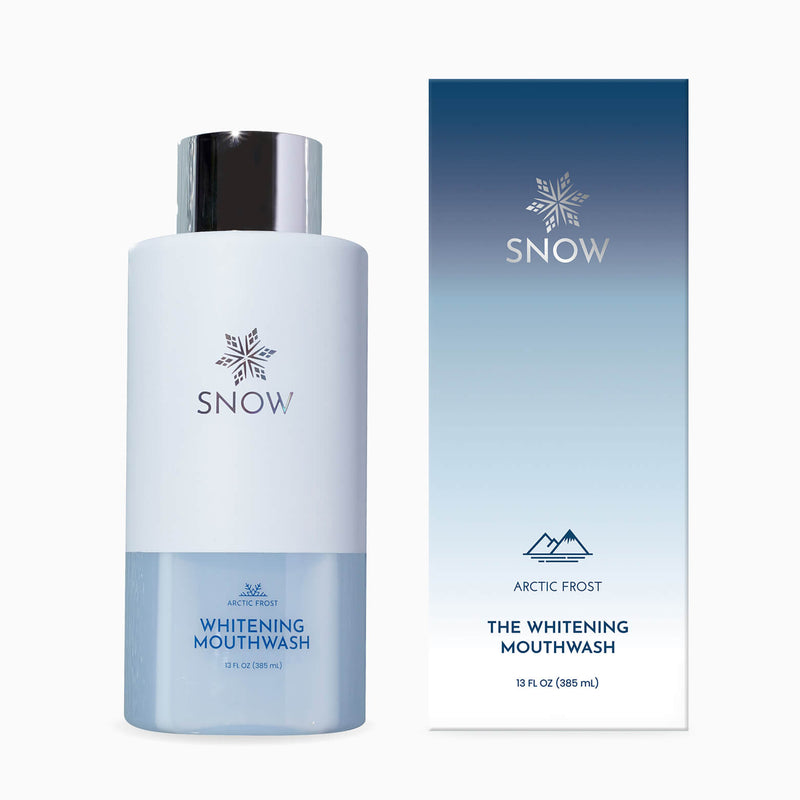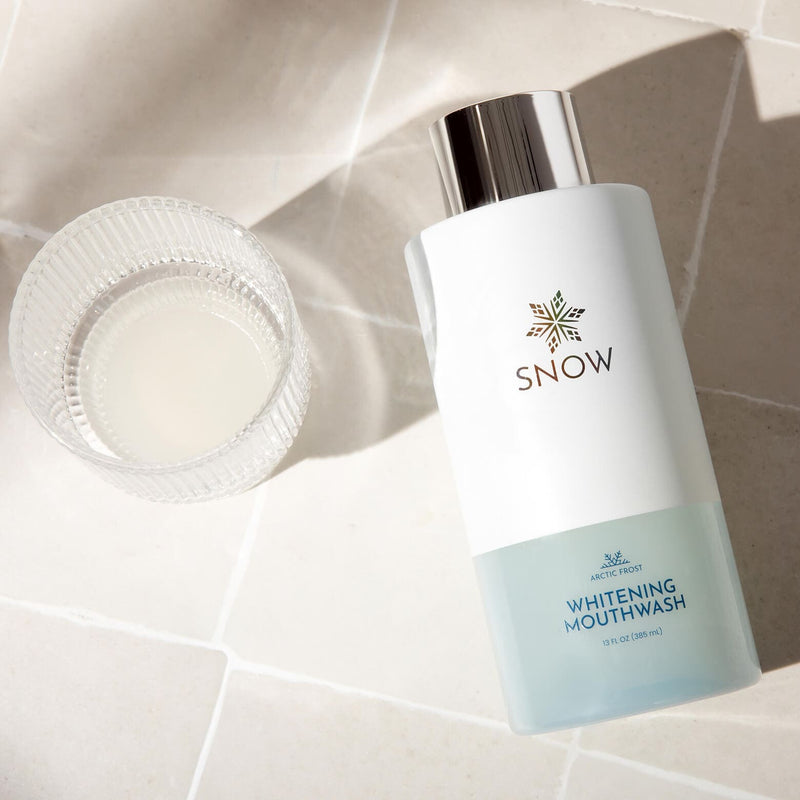Americans are often recognized around the world for their bright, white smiles. But how do Americans have such white teeth?
The answer is not just one secret. It comes from a mix of habits and treatments that include good oral hygiene, preventive dental care, cosmetic dental treatments, and the use of whitening products.
Together, these practices have made white teeth a cultural standard in the United States. In the sections below, we will explore exactly how Americans achieve and maintain such consistently bright smiles.
Key Takeaways
-
Cosmetic dental treatments like teeth whitening and veneers are pivotal for achieving and maintaining a bright smile in America.
-
Good oral hygiene practices, including brushing, flossing, and using mouthwash, are essential for overall dental health and preventing tooth discoloration.
-
There are significant disparities in access to dental care in the U.S., particularly affecting low-income individuals and minorities, underscoring the need for policy reforms.
Why White Teeth Matter in American Culture

In the United States, white teeth are more than a measure of dental health. They are seen as cultural symbols of success, discipline, and attractiveness.
Research by Khalid and Quiñonez (2015) explains that straight, white teeth act as social markers that reinforce class divisions. People with bright smiles are often judged as healthier, more confident, and even more employable.
By contrast, yellow teeth, crooked teeth, or visible stains can create negative perceptions about a person’s oral health and appearance.
The concept of the “Hollywood smile” played a big role in shaping this cultural expectation. American films, ads, and celebrities promoted uniform, white teeth as the standard of beauty.
Over time, this ideal spread into everyday society, influencing not only how people see themselves but also how others judge them. Today, many Americans consider white teeth as important as clear skin or well-groomed hair.
This cultural obsession is reinforced by several factors:
-
Social mobility and appearance: A bright smile is often associated with career success and personal discipline.
-
Health perception: Straight and white teeth signal youth, strength, and protection against tooth decay, even when the appearance is achieved through cosmetic dental treatments rather than natural teeth.
-
Professional influence: Cosmetic dentists and orthodontists continue to promote whitening and veneers as ways to achieve the perfect smile.
Unlike in some countries where natural teeth with minor imperfections are accepted, American society often expects smiles to be flawless. As a result, cosmetic dentistry has become part of mainstream dental care, blurring the line between health treatments and appearance-driven procedures.
How Do Americans Have Such White Teeth
When people ask, “How do Americans have such white teeth?”, the answer is not one single habit. Instead, it’s a system of daily care, preventive routines, and access to cosmetic dental treatments. Americans combine good oral hygiene, professional dental care, whitening products, and lifestyle modifications to maintain a bright smile.
Good Oral Hygiene Practices
White teeth start with consistent habits at home.
From childhood, Americans are taught to brush at least twice a day using fluoride toothpaste. Proper brushing helps protect enamel, remove plaque, and prevent tooth decay that can dull the smile. Dentists recommend brushing in gentle, circular motions for two minutes to achieve the best results without damaging the enamel.
Flossing is just as important. It clears out food particles and bacteria from between teeth and along the gumline, places that a toothbrush cannot reach. Knowing how to use dental floss correctly can significantly improve plaque removal and reduce the risk of gum disease.
Lastly, mouthwash often complements brushing and flossing by rinsing away remaining bacteria, freshening the mouth, and helping preserve whiteness. Together, these simple practices form the foundation of good oral hygiene that supports long-term dental health.
Preventive Dental Care
Routine dental checkups every six months are a cornerstone of dental health in the U.S. Dentists clean and polish teeth, check for cavities, and treat early problems before they become serious.
These visits are often covered by dental insurance, making preventive care accessible to many patients. Professional cleanings also remove stains that daily brushing and flossing cannot, helping maintain white teeth over time.
Another part of preventive care in the U.S. is community water fluoridation, a measure proven to strengthen enamel and prevent tooth decay. Studies confirm that fluoridation reduces cavities significantly. It reports that water fluoridation lowers dental caries in children and adults by about one quarter.
The benefits are not only medical but also financial. A 2016 study estimated that water fluoridation saves about $6.8 billion annually in tooth decay–related costs in the U.S. Because it improves oral health across entire populations regardless of income, the CDC has called water fluoridation one of the top public health achievements of the 20th century.
Together, preventive dental visits and fluoridated water play a big role in how Americans keep their teeth white and healthy. They help protect enamel, reduce tooth decay, and create a foundation that supports whitening and cosmetic dental treatments later on.
Teeth Whitening Products
One of the most visible reasons for white teeth in America is the widespread use of whitening products. Whitening strips, gels, pens, and LED kits are sold in almost every pharmacy and online store. Knowing how long to leave teeth whitening strips on can maximize effectiveness while reducing sensitivity.
Regulations in the U.S. allow higher concentrations of peroxide compared to many other countries, which makes results faster and more noticeable. Whitening toothpaste is also popular for everyday maintenance, helping remove stains from coffee, soda, and food. With so many options available, most Americans have tried at least one whitening product, making it a common part of oral health routines.
SNOW’s whitening system includes everything from their LED-powered Teeth Whitening Kit for deeper treatments to on-the-go pens, non-toxic strips, and vitamin-enriched toothpaste for daily maintenance. Each formula is thoughtfully developed to deliver real results while protecting long-term oral health.
Whether you’re just starting your whitening journey or maintaining a bright smile, SNOW offers a complete solution designed for daily use, busy lifestyles, and every smile type.
Shop the Full Whitening Collection
Cosmetic Dental Treatments
When whitening products aren’t enough, cosmetic dentistry steps in. Cosmetic dentists offer procedures such as in-office whitening, veneers, and crowns. Porcelain veneers are one of the most popular cosmetic dental treatments in the U.S. because they provide a permanent solution for discolored or damaged teeth. Veneers can instantly create a flawless smile that looks natural and resists stains.
Crowns are another cosmetic dental option, used to cover and protect teeth while improving their appearance. Professional whitening done by dentists is also common, producing faster results than at-home kits. These cosmetic dental treatments are widely accepted in American dentistry and considered a normal way to improve both the health and appearance of teeth.
Lifestyle Balance
Even with good habits and treatments, lifestyle plays a role. Americans often consume coffee, soda, wine, and sugary foods, all of which can cause stains or weaken enamel.
Instead of avoiding these completely, many balance their diet with whitening and regular dental care.
Whitening is treated as ongoing maintenance, not a one-time procedure. It’s common for people to repeat whitening every few months to keep yellow teeth from showing, and knowing how long after teeth whitening you can eat normally is key to preserving results.
At-Home Whitening Options
Convenience has made at-home whitening especially popular. Millions of Americans now use whitening kits at home to achieve results similar to professional treatments, without the cost or discomfort of in-office procedures.
One of the most effective options on the market is the SNOW Diamond Series Teeth Whitening Kit. This system is designed to deliver professional-level results in as little as 9 minutes a day. It combines powerful whitening agents with ingredients that protect enamel and minimize sensitivity.
The Diamond Series features a dual-action formula with carbamide peroxide and hydrogen peroxide, both clinically proven to break down stains. It’s also enhanced with hydroxyapatite, a mineral that supports enamel strength, and potassium nitrate, which helps reduce sensitivity during treatment.
The kit includes:
-
SNOW® Blue LED Mouthpiece for light-accelerated whitening
-
Diamond Whitening Serum (25 treatments)
-
Professional Teeth Shade Guide to track progress
This product is safe for daily use, including on sensitive teeth and dental work like crowns or veneers. Most users see visible improvements within a few days, with full results in about three weeks.
Compared to traditional whitening strips or toothpaste, the SNOW Diamond Series offers faster, more effective results with less irritation. Its science-backed formula and thoughtful design make it a reliable choice for long-term smile maintenance.
To maintain results, users can continue whitening a few times per month, and combine it with daily brushing, flossing, and regular dental care.
If you’re looking for a clinically tested, enamel-safe whitening system that works, the Diamond Series is a proven solution.
Shop the SNOW Diamond Series Teeth Whitening Kit
The Role of Good Oral Hygiene Practices
Keeping your smile white isn’t just about cosmetic treatments; it starts with everyday habits. Brushing, flossing, and rinsing with mouthwash are the basics that protect tooth enamel, prevent tooth decay, and stop yellow teeth from creeping in. Skip these steps too often, and stains, plaque, and cavities can undo even the best whitening treatments.
Good oral hygiene also helps you get the most out of cosmetic dental work. Whether you’ve invested in teeth whitening, veneers, or other cosmetic dental treatments, consistent care keeps results looking fresh and your overall dental health strong.
Brushing the Right Way
Brushing is the foundation of any routine, but technique matters:
-
Use a soft-bristle toothbrush to protect enamel.
-
Brush in gentle circles instead of harsh scrubbing.
-
Spend at least two minutes, twice a day, using a high-quality toothpaste designed to clean effectively without irritation.
Instead of traditional fluoride toothpaste, many people are now turning to fluoride-free alternatives like SNOW’s Whitening Toothpaste, which is formulated to clean teeth, freshen breath, and support enamel, all without fluoride. It’s especially ideal for those with sensitivity or concerns about fluoride exposure.
Brushing properly with the right toothpaste helps remove plaque, prevent cavities, and maintain the results of whitening treatments or cosmetic dental work.
Why Flossing Matters
Think of flossing as the step that gets what brushing leaves behind. It removes food and plaque between teeth and along the gumline, where cavities and gum problems often start. Flossing regularly:
-
Helps prevent gum disease and tooth decay.
-
Reduces plaque build-up that can make white teeth look dull.
-
Supports overall oral health and a cleaner smile.
Not sure if you're doing it right? Here's a quick guide on how to floss effectively to get the most benefit from your routine.
The Role of Mouthwash
Mouthwash isn’t just about fresh breath. Some people wonder if it can replace flossing, but mouthwash is not better than flossing.
Rather, a good rinse complements brushing and flossing by reaching spots your toothbrush and floss might miss. It helps:
-
Wash away bacteria that cause stains
-
Extend the results of teeth whitening treatments
-
Support long-term gum and enamel health
While many conventional rinses are fluoride-based, alternatives without fluoride are gaining popularity for those seeking gentler formulations. Making mouthwash part of your daily routine is a simple and effective way to boost oral health and maintain a bright, clean smile.
Market Dynamics of Teeth Whitening Products
The global teeth whitening market was valued at USD 6.9 billion in 2021 and is projected to reach USD 10.6 billion by 2030, growing at about 5% annually, according to the GVR Report: Teeth Whitening Market Size, Share & Trends (2022–2030). North America leads the industry with 37% of revenue, while Asia Pacific is expected to grow the fastest as rising incomes and interest in cosmetic dentistry fuel demand.
Whitening toothpaste makes up the largest share at 33%, but its effects are mild since peroxide levels are low. The fastest growth comes from gels, strips, and LED whitening devices, which deliver more dramatic results by targeting stains quickly. This shift shows that consumers want visible changes, not just maintenance.
While offline retail still dominates with 61% of sales, e-commerce is expanding six times faster. Social media has amplified demand, with influencers and celebrities normalizing whitening as part of everyday self-care. Surveys reveal that two-thirds of American adults have tried whitening, and nearly all say a smile is their most important social asset.
The pandemic briefly slowed in-office procedures but accelerated at-home whitening solutions. Today, both professional treatments and convenient at-home products keep the market strong. Together, social trends, cosmetic dentistry, and digital sales channels continue to drive the whitening industry forward.
At SNOW, we’re proud to be a trusted partner in this shift. With over 4,000 five-star reviews and customers around the world, we’re committed to making professional-level teeth whitening safe, effective, and accessible, right from home. Our mission is to support your smile goals with products that are thoughtfully designed, enamel-safe, and results-driven.
Shop Our Teeth Whitening Products
Safety and Risks of Teeth Whitening

Teeth whitening is one of the most popular cosmetic dental treatments, and when done correctly, it is generally safe. Most whitening products use hydrogen peroxide or carbamide peroxide to lift stains from enamel. These ingredients are effective, but the way they are applied is what determines safety.
The most common side effects are short-term tooth sensitivity and mild gum irritation. These issues usually fade on their own, but they can worsen if whitening products are used too often or without care. Dentists usually recommend limiting treatments to once every three to six months to protect enamel and gums.
For people who want the safest results, professional whitening at a dentist’s office is the best choice. Dentists can adjust peroxide levels, protect soft tissues, and personalize treatment. At the same time, over-the-counter products can also be safe when used correctly. It is important to follow the instructions and look for products that are ADA-recognized.
With proper use, whitening can brighten teeth effectively while keeping enamel and gums healthy. The key is moderation, consistency, and using trusted products or professional guidance when needed.
Orthodontics Prevalence in the U.S.

Orthodontics is one of the most visible cosmetic dental treatments in America. Data from the Medical Expenditure Panel Survey (MEPS) shows that in 2019, about 6.2 million Americans used braces or retainers. Most patients were under the age of 18, but adults are catching up, now making up nearly one-third of orthodontic patients.
The American Journal of Orthodontics and Dentofacial Orthopedics (AJO-DO) reports that only 2 percent of U.S. dentists practice orthodontics.
However, access is uneven. California and New York have the highest concentration of orthodontists, while states with lower incomes, such as Mississippi, have very few. Larger cities often offer more treatment options, while smaller towns may lack specialists.
For many patients, orthodontics is about more than treating crooked teeth. Straight smiles improve appearance and make whitening results more noticeable by reducing gaps and uneven stains.
Daily care with fluoride-free toothpaste, floss, and mouthwash helps maintain results and prevent cavities. At the same time, whitening treatments help preserve brightness and protect against yellow stains from coffee, food, and drinks.
In American society, orthodontics has become part of a wider culture of cosmetic dentistry. For most people, it is not just about correcting teeth but about achieving a confident smile that feels both natural and professional.
Disparities in Access to Dental Care
Despite progress in cosmetic dentistry and preventive care, access to dental services in the U.S. remains unequal.
People from low-income communities and racial or ethnic minority groups are more likely to experience poor oral health compared to those in higher-income brackets. Limited insurance coverage often makes it difficult for these individuals to receive consistent, high-quality dental care. As a result, long-standing inequalities in oral health continue to persist.
Out-of-pocket expenses for dental care represent a significant financial burden for many Americans, particularly for low-income groups. Medicaid does not universally cover dental care for adults, leading to varied access based on state policies. Cultural and social factors can also influence the likelihood of seeking dental care, especially in underserved communities.
These disparities highlight the importance of policy interventions to improve access to dental care and ensure that everyone has the opportunity to achieve good oral health. Addressing these gaps will be crucial in making whiter teeth and overall dental health accessible to all.
Final Thoughts
Maintaining a bright, healthy smile takes more than just whitening treatments. It requires a consistent oral care routine that supports enamel health while protecting your results over time.
While treatments like veneers and whitening kits can enhance the appearance of your smile, the results last longer when paired with daily brushing, flossing, and rinsing, using products that are both effective and gentle.
Recent studies show that hydroxyapatite toothpaste may outperform fluoride in both remineralization and whitening benefits, making it an ideal option for those looking to strengthen enamel without the risks of fluoride overuse.
That’s why SNOW developed its fluoride-free toothpaste using nano-hydroxyapatite, the same mineral found in your teeth. It works alongside SNOW’s whitening treatments to keep your smile bright, strong, and protected.
SNOW’s enamel-safe, dentist-developed products are designed to deliver real results — without sensitivity and without compromise.
Shop the Full Whitening System Now
Frequently Asked Questions
Need quick answers? Here are the most common questions people ask about.
What are the most common cosmetic dental treatments in the U.S.?
Teeth whitening and veneers are the most common cosmetic dental treatments in the U.S., as they significantly enhance the appearance of teeth. These procedures are popular for their effectiveness and ability to boost confidence.
How does good oral hygiene contribute to whiter teeth?
Good oral hygiene prevents tooth decay and protects enamel, contributing to whiter teeth by maintaining their natural brightness. Consistent brushing, flossing, and rinsing support long-lasting results from cosmetic dental treatments.
What role does community water fluoridation play in dental health?
Community water fluoridation significantly reduces cavities and protects tooth enamel, leading to improved overall dental health and prevention of tooth decay.
Are there risks associated with teeth whitening?
Teeth whitening can lead to increased sensitivity and gum irritation, so it's important to consult a dental professional beforehand to mitigate these risks.
Why are there disparities in access to dental care in the U.S.?
Disparities in access to dental care in the U.S. are primarily driven by factors such as income, insurance coverage, and varying state Medicaid policies. These elements significantly impact the quality of oral health care different populations receive.















































